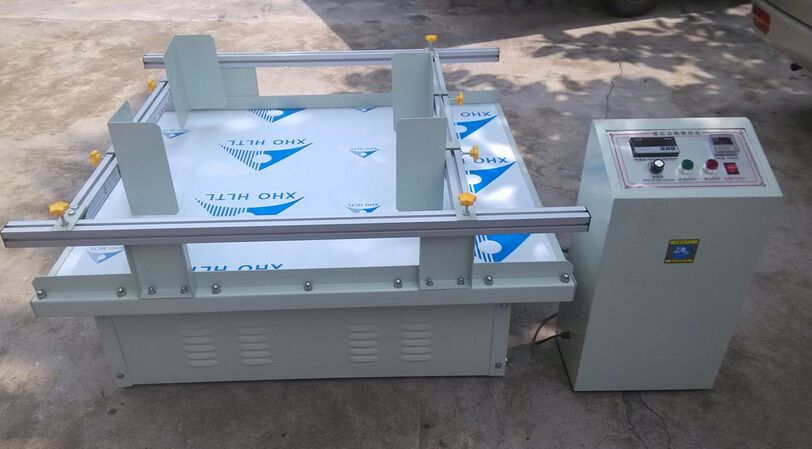ISTA 2F Small Parcel Multi-Axis Vibration Test
The ISTA 2F test is a multi-axis vibration test designed to simulate the complex environmental conditions experienced by small parcels during transportation. This standard, established by the International Safe Transit Association (ISTA), provides specific guidelines for testing packages to ensure they withstand the rigors of handling and transit.
During this test, packages are subjected to controlled vibrations along three axes: X, Y, and Z. The aim is to mimic the real-world conditions such as road bumps, jolts, and impacts that parcels may encounter in transit. This testing ensures that packaging materials can protect contents from damage without compromising on functionality or appearance.
The test setup typically includes a vibration table capable of generating controlled vibrations along all three axes simultaneously. The duration of the test is generally 30 minutes, with specific frequencies and amplitudes prescribed in ISTA 2F. Specimen preparation involves ensuring that the package is representative of typical shipping conditions.
After the test, the integrity of the packaging is checked for any signs of damage or deformation. This includes inspecting the exterior as well as opening the package to check if the contents have been compromised. The results are documented and compared against the initial condition of the package to determine compliance with ISTA 2F standards.
The importance of this test cannot be overstated, especially in sectors where product integrity is critical during transit. By using this standard, companies can ensure that their packages meet global quality and safety requirements, thereby protecting brand reputation and customer satisfaction.
Why It Matters
The ISTA 2F small parcel multi-axis vibration test is crucial for ensuring the integrity of products during transit. In sectors like e-commerce, logistics, and manufacturing, where packages travel long distances, protecting contents from damage due to vibration is paramount.
- Ensures compliance with international standards
- Reduces product damage in transit
- Promotes brand reputation by delivering undamaged goods
- Enhances customer satisfaction and trust
The test is particularly important for small parcels as they are more susceptible to damage due to their size, shape, and the handling methods used in transit. By subjecting these packages to a controlled environment that mimics real-world conditions, companies can identify potential weaknesses in packaging design and materials early on.
Benefits
- Enhanced protection of goods during transit
- Reduction in product damage rates
- Promotion of safer and more reliable packaging solutions
- Cost savings from reduced claims and returns
- Increased customer satisfaction through undamaged deliveries
Industry Applications
| Industry Sector | Application |
|---|---|
| E-commerce | Testing packages for online retail deliveries to ensure they withstand transit. |
| Logistics | Ensuring the reliability of shipping containers and packaging materials. |
| Manufacturing | Validating packaging for product protection during manufacturing processes. |
| Test Parameters | Description |
|---|---|
| Vibration Frequency | 20 Hz to 60 Hz, depending on the size and weight of the parcel. |
| Vibration Amplitude | Amplitudes vary between 5 mm and 10 mm for small parcels. |
| Durability Time | The test lasts approximately 30 minutes. |





